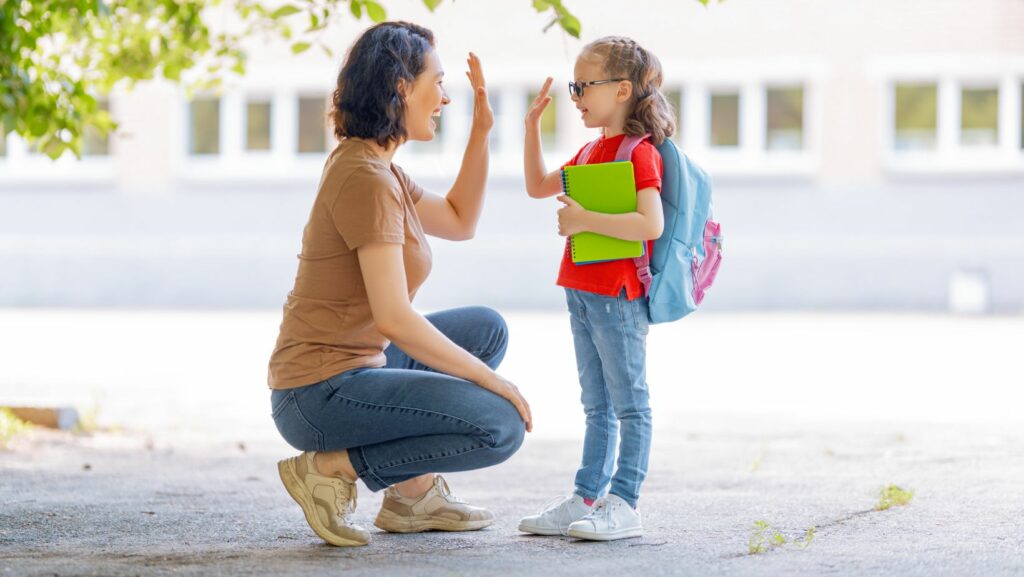Navigating the journey of parenting can feel like an overwhelming adventure, especially when safety is a top priority. In a world filled with endless advice and information, parents often find themselves sifting through a myriad of opinions on how to best protect their children. Safe parenting isn’t just about keeping children away from harm; it’s about creating an environment where they can thrive and explore confidently.
The concept of safe parenting encompasses a variety of practices, from ensuring physical safety to fostering emotional well-being. It’s about striking the right balance between providing protection and allowing independence. As parents strive to make informed decisions, understanding the core principles of safe parenting becomes essential. By focusing on these principles, parents can build a foundation that supports their child’s growth while ensuring their safety and security.
Safe Parenting
 Safe parenting involves strategies that address both the physical and emotional needs of children. Parents implement preventive measures like childproofing homes, using car seats, and monitoring digital activities to ensure physical safety. Establishing clear boundaries and encouraging open communication supports emotional security, fostering resilience and trust in children.
Safe parenting involves strategies that address both the physical and emotional needs of children. Parents implement preventive measures like childproofing homes, using car seats, and monitoring digital activities to ensure physical safety. Establishing clear boundaries and encouraging open communication supports emotional security, fostering resilience and trust in children.
Educating children on personal safety is crucial for safe parenting. This includes teaching them about stranger danger, appropriate online behavior, and emergency contact information. Providing age-appropriate information empowers children to make safe decisions independently.
Modeling safe behavior sets an example for children. Parents wear seatbelts, prioritize healthy habits, and demonstrate respectful communication to instill these values in their children. This approach encourages children to mimic these behaviors, reinforcing their importance.
Parents adopt a balanced approach to autonomy and supervision, tailoring their involvement as children grow. For toddlers, supervision is constant, while older children might receive more independence, with periodic check-ins. Maintaining this balance ensures children feel trusted yet safe.
Creating an environment where children feel safe to express emotions and thoughts is fundamental. Parents practice active listening, validate feelings, and offer support without judgment. This open dialogue cultivates a trusting relationship, encouraging children to share concerns freely.
Key Principles of Safe Parenting
Safe parenting involves several key principles designed to protect both the physical and emotional well-being of children. These principles offer a foundation that supports healthy growth and development.
Building Trust and Communication
 Trust and communication are fundamental to safe parenting. Establishing trust involves being consistent and reliable, which helps children feel secure. Open communication creates an environment where children can share their thoughts and feelings without fear of judgment. When parents actively listen to their children, they foster a sense of understanding and validation. Clear dialogue enables parents to guide their children in making safe and informed decisions, reinforcing their confidence and independence.
Trust and communication are fundamental to safe parenting. Establishing trust involves being consistent and reliable, which helps children feel secure. Open communication creates an environment where children can share their thoughts and feelings without fear of judgment. When parents actively listen to their children, they foster a sense of understanding and validation. Clear dialogue enables parents to guide their children in making safe and informed decisions, reinforcing their confidence and independence.
Establishing Boundaries and Rules
Boundaries and rules provide structure and safety within the family unit. Clear and consistent rules help children understand expectations and consequences. Boundaries guide behavior and promote self-discipline, allowing children to develop autonomy safely. When parents explain the reasons behind rules, children learn the importance of safety and responsibility. Establishing boundaries and rules empowers children to navigate the world with a sense of security while respecting others and themselves.
Creating a Safe Home Environment
A safe home environment plays a critical role in safe parenting. It’s important to address both physical and emotional factors when setting up a home that fosters security and growth.
Childproofing Essentials and Emergency Preparedness
 Childproofing safeguards children from common household hazards. Install outlet covers to prevent electrocution and secure furniture to prevent tip-overs. Use safety gates on staircases and childproof locks on cabinets, especially those containing cleaning products and sharp objects. Ensure windows have locks that are out of reach for young children. Keep cords from window blinds out of reach to reduce strangulation risks. These measures prevent accidents and create a safe exploratory space for children.
Childproofing safeguards children from common household hazards. Install outlet covers to prevent electrocution and secure furniture to prevent tip-overs. Use safety gates on staircases and childproof locks on cabinets, especially those containing cleaning products and sharp objects. Ensure windows have locks that are out of reach for young children. Keep cords from window blinds out of reach to reduce strangulation risks. These measures prevent accidents and create a safe exploratory space for children.
Effective emergency preparedness protects families during unexpected situations. Install smoke and carbon monoxide detectors and test them monthly. Create a clear fire escape plan and practice it regularly. Store an adequately stocked first aid kit with essentials like bandages and antiseptic wipes. Ensure all household members know basic emergency contacts and keep a list visible. By planning, families can navigate emergencies with confidence and safety.

